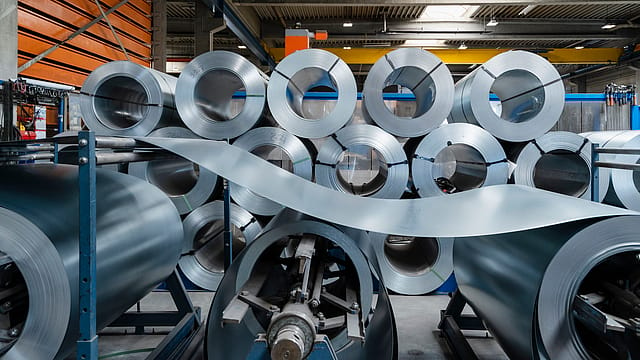Recession worries, energy costs weigh heavily on Tata Steel Europe
ADVERTISEMENT

After posting positive cash flow from each tonne of steel that Tata Steel produced in Europe in nearly two years, the steelmaker slipped into operational losses because of low steel prices and high energy costs. The European business posted earnings before interest, tax, depreciation and amortisation (EBITDA) loss of ₹7,810 for each tonne of steel that it produced in the December quarter. The last time it reported an EBITDA loss per tonne was in the December quarter of 2020, at ₹3,436.
The company’s revenues were lower due to a drop in steel realisations, though it was partly offset by 6% quarter-on-quarter (QoQ) growth in deliveries. The raw material cost declined on lower coking coal and iron consumption cost. The company posted an EBITDA loss of ₹1,551 crore in Europe because of margin compression as steel prices moved lower even as total costs remain elevated.
In the same quarter of FY22, the European business posted a positive EBITDA of ₹2,942 crore, thanks to its profit of ₹13,642 from each tonne of steel that it produced. The operational revenue of the European division reduced to ₹20,745 crore from ₹22,769 crore year-on-year (YoY).
January 2026
Netflix, which has been in India for a decade, has successfully struck a balance between high-class premium content and pricing that attracts a range of customers. Find out how the U.S. streaming giant evolved in India, plus an exclusive interview with CEO Ted Sarandos. Also read about the Best Investments for 2026, and how rising growth and easing inflation will come in handy for finance minister Nirmala Sitharaman as she prepares Budget 2026.
T.V. Narendran, Chief Executive Officer & Managing Director, said the deliveries in Europe were lower in the nine months of this financial year due to demand slowdown. “Recession concerns weighed on steel prices, which coupled with elevated energy costs affected our performance,” he added. Koushik Chatterjee, Executive Director & Chief Financial Officer said, the European operations witnessed margin compression due to lower realisations and elevated input costs.
Shares of Tata Steel Ltd slipped 5.3% to ₹111.20 on BSE on Tuesday, in response to the company’s weak December quarter earnings. The company’s consolidated EBITDA was at around ₹4,050 crore, a whopping 75% lower YoY. It reported a consolidated net loss of about ₹2,502 crore despite the ₹2,705 crore profit in the India business. Tata Steel’s consolidated net profit was ₹1,297 crore and ₹9.598 crore in the first two quarters of this financial year.
The consolidated net debt of Tata Steel increased to ₹71,706 crore from ₹51,049 crore in March 2022. “We continue to invest in capacity growth in India, taking our capital expenditure to ₹3,632 crore for the quarter and ₹9,746 crore for the year to date,” said Narendran. The company targets to expand its crude steel production capacity to 40 million tonne (MT) a year from 21MT in India by 2030.
Tata Steel UK looks to build electric arc furnaces at Port Talbot in South Wales to switch its production to recycling scrap steel. The loss-making subsidiary of the Indian steel producer has been in discussion with the U.K. government for financial support to switch to less carbon-intensive steelmaking. The company produces about 3-4 million tonne (MT) of steel in the U.K.
“We believe that the best way to make steel in the UK is to leverage the scrap,” Narendran told Fortune India earlier. Recycling scrap is a long-term sustainable business. But procuring scrap is typically 70% of the cost of recycling. The advantage for Tata Steel in the U.K. is the availability of scrap. The European nation is one of the biggest exporters of scrap.
In the December quarter, the UK business made progress on derisking the British Steel Pension Scheme (BSPS) by expanding the insurance coverage on liabilities from 30% to 60%. “Depending on market conditions, the residual insurance of 40% of liabilities will be completed in the first half of the calendar year 2023,” said the CFO.
